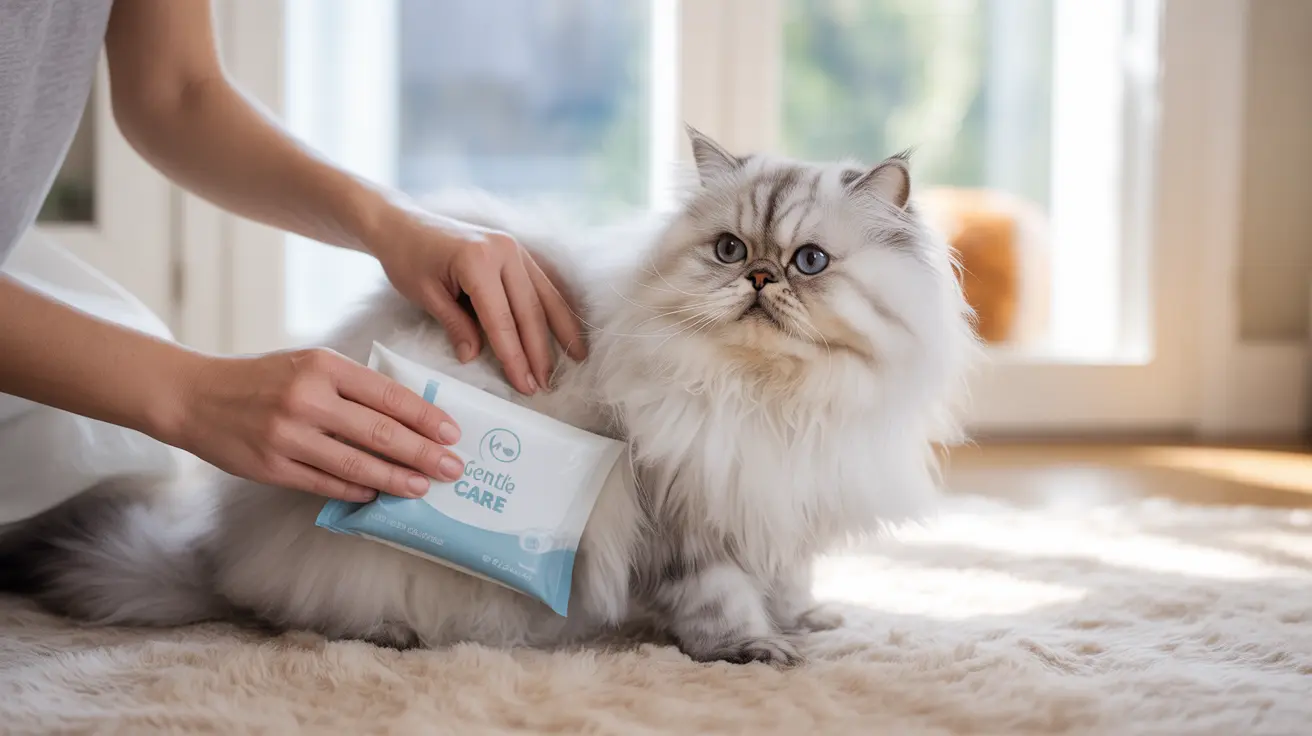Understanding Why Long-Haired Cats Need Special Bottom Care
Long-haired cats face unique challenges when it comes to maintaining cleanliness around their bottom area. Their dense, flowing fur can easily trap litter, feces, and other debris, leading to uncomfortable mats and potential health issues if left unaddressed.
Certain factors can make this problem more pronounced:
- Age and mobility issues
- Overweight conditions
- Digestive problems
- Breed-specific characteristics
Essential Cleaning Tools and Supplies
Having the right tools makes bottom maintenance much easier and safer:
- Pet-safe cleaning wipes
- Blunt-tipped grooming scissors
- Metal grooming comb
- Cat-specific shampoo
- Soft towels
- Protective gloves
Daily Maintenance Techniques
Regular maintenance is key to preventing hygiene issues. Implement these daily practices:
Regular Inspection
Check your cat's bottom area daily for any signs of soiling or matting. This quick check can prevent more serious issues from developing.
Spot Cleaning
When you notice any soiling, promptly clean the area using pet-safe wipes or a damp cloth. Always work gently and reward your cat with treats afterward.
Professional Trimming Techniques
Regular trimming is essential for maintaining cleanliness:
The Sanitary Trim
This involves carefully trimming the fur around the anal area to prevent waste from sticking. Always use blunt-tipped scissors and keep the trim area small and focused.
Safety First
When trimming, always:
- Use a comb as a barrier between skin and scissors
- Work in small sections
- Keep sessions short to minimize stress
- Have treats ready for positive reinforcement
Dealing with Challenging Situations
Sometimes, despite our best efforts, problems can arise:
Matted Fur
If you encounter matted fur:
- Use a detangling spray designed for cats
- Work slowly with a metal comb
- Consider professional grooming for severe cases
Uncooperative Cats
For resistant cats:
- Break grooming into short sessions
- Use positive reinforcement
- Consider professional help if needed
When to Seek Professional Help
Consider consulting a veterinarian or professional groomer if:
- Your cat shows signs of skin irritation
- There are persistent hygiene issues
- You're uncomfortable performing maintenance yourself
- Your cat becomes extremely stressed during grooming
Frequently Asked Questions
How do I safely clean my long-haired cat's bottom to prevent fecal buildup?
Use pet-safe wipes or a damp cloth, working gently from front to back. Always wear gloves and keep cleaning supplies readily available. Regular maintenance prevents serious buildup.
What are the best tools and techniques for trimming a long-haired cat's bottom fur?
Use blunt-tipped scissors and a metal comb as a barrier. Keep sessions short, focus on the immediate area around the anus, and always work slowly and carefully.
How often should I give my long-haired cat a hygiene trim around their anus?
Most long-haired cats benefit from a hygiene trim every 4-6 weeks, though this may vary based on your cat's specific needs and fur growth rate.
What can I do if my long-haired cat resists having their bottom cleaned or trimmed?
Start with short sessions, use plenty of positive reinforcement, and consider working with a professional groomer to establish a routine. Some cats may need gradual desensitization to grooming.
When should I consult a vet about persistent messiness or odor around my cat's bottom?
Consult a vet if you notice persistent diarrhea, skin irritation, excessive odor, or if your cat shows signs of discomfort when grooming or using the litter box.
Conclusion
Maintaining a clean bottom area for your long-haired cat requires dedication, patience, and the right techniques. By following these guidelines and establishing a regular grooming routine, you can help ensure your cat stays clean, comfortable, and healthy.
Remember that every cat is different, so you may need to adjust these techniques to suit your pet's specific needs and temperament. When in doubt, don't hesitate to seek professional guidance from a veterinarian or certified cat groomer.






